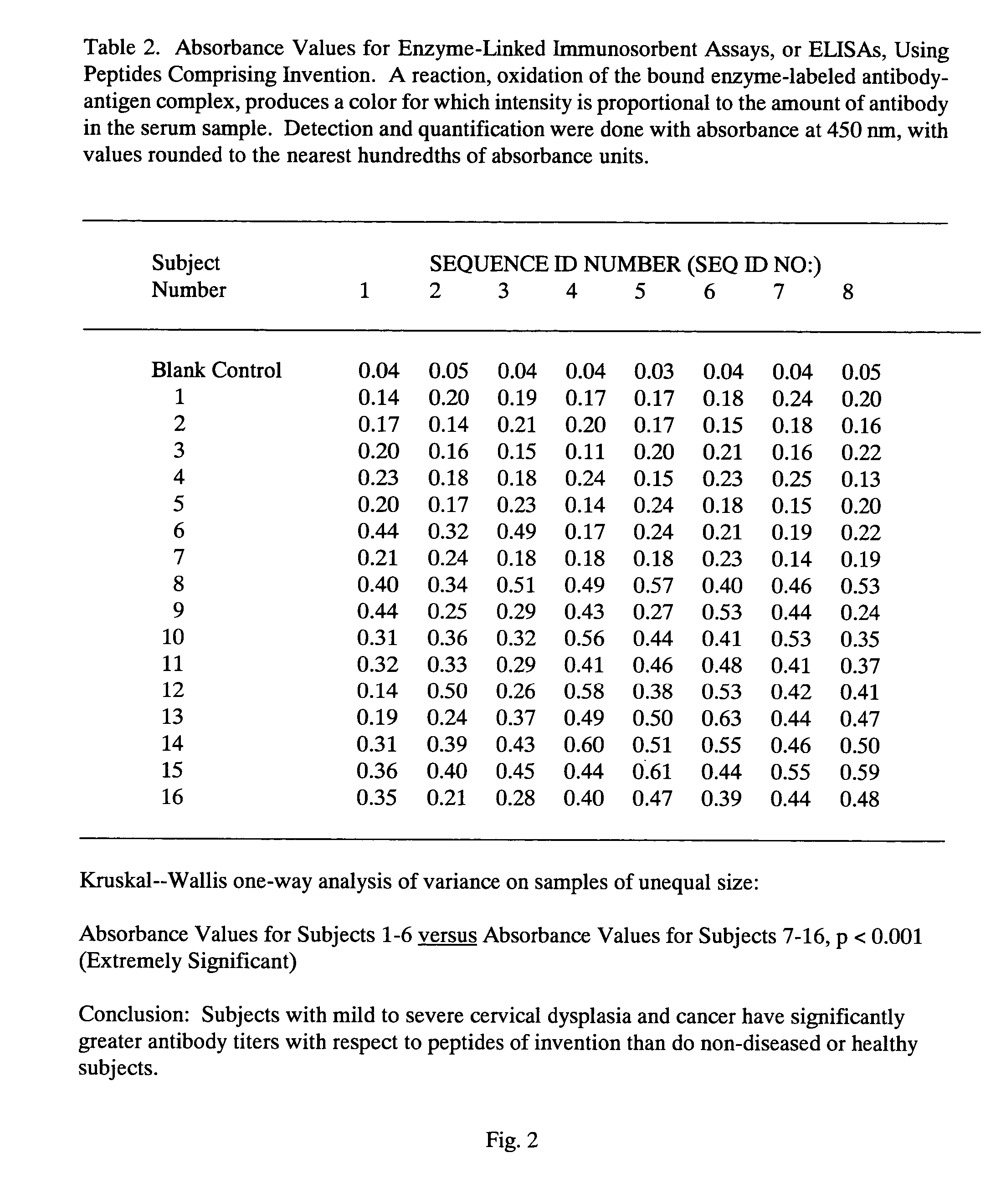Peptides from the E2, E6, and E7 proteins of human papilloma viruses 16 and 18 for detecting and/or diagnosing cervical and other human papillomavirus associated cancers
a human papillomavirus and peptide technology, applied in the field of peptides reactive with human papillomavirus antibodies, can solve the problems of high false negative rate, difficult sample collection, and high requirement for specialized labs staffed by highly trained personnel, and achieve high specificity and reduce the likelihood of undesirable cross reactivity
- Summary
- Abstract
- Description
- Claims
- Application Information
AI Technical Summary
Benefits of technology
Problems solved by technology
Method used
Image
Examples
example i
[0061] 1. Synthesis of the Amino Acid Sequences or Peptides
[0062] While the peptides of the invention may be obtained by a variety of prior art methods, including, but not limited to recombinant technology and other biotechnology sources, chemical synthesis is the preferred method as it facilitates the accumulation of a sizable quantity of peptide in a substantially pure form, 95 to 99% by weight in the present case. The synthesis of peptides may be accomplished on a 0.25 scale using (9-fluorenyl) methoxycarbonyl (FMOC)-protected L-amino acids, with super acid-labile 2-chlorotrityl resin (Novabiochem, Nottingham, UK) as a solid support. A Resin may be preloaded into a reaction vessel, washed with dimethyl formamide and then drained completely. To this resin may be added 10 ml of 20% piperidine in dimethyl formamide . The mixture may then be shaken for 5 minutes and drained. Another 10 ml of 20% piperidine in dimethyl formamide may be added, and the mixture shaken for 30 minutes. Aft...
PUM
| Property | Measurement | Unit |
|---|---|---|
| concentration | aaaaa | aaaaa |
| pH | aaaaa | aaaaa |
| pH | aaaaa | aaaaa |
Abstract
Description
Claims
Application Information
 Login to View More
Login to View More - R&D
- Intellectual Property
- Life Sciences
- Materials
- Tech Scout
- Unparalleled Data Quality
- Higher Quality Content
- 60% Fewer Hallucinations
Browse by: Latest US Patents, China's latest patents, Technical Efficacy Thesaurus, Application Domain, Technology Topic, Popular Technical Reports.
© 2025 PatSnap. All rights reserved.Legal|Privacy policy|Modern Slavery Act Transparency Statement|Sitemap|About US| Contact US: help@patsnap.com


